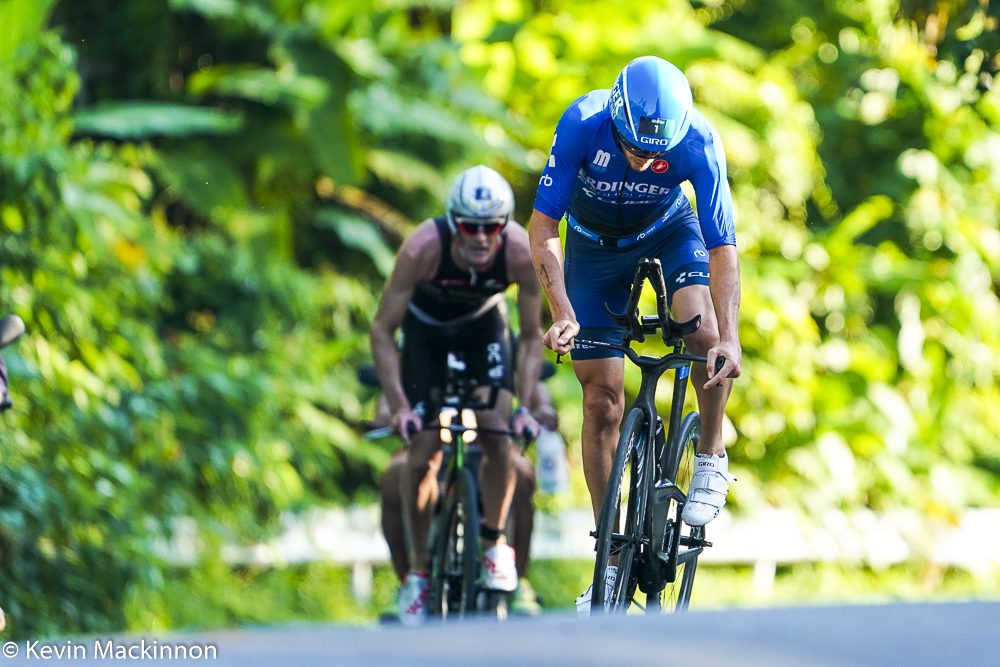10 Ways to Get Stronger on the Bike
It's simple: You will ride faster this race season if you're stronger.
 Photo by:
Kevin Mackinnon
Photo by:
Kevin Mackinnon
“How do I get stronger on the bike?” you ask. It’s that time of year: your races are done and you know where you stand performance-wise. You might find yourself wondering how some girls are so strong on the bike. How some guys ride by you as if you’re standing still. There’s at least one explanation: strength. They have more of it than you (at present).
If you’re wondering what you can do this winter to improve your cycling (and your running and swimming, by the way), consider adding a regular strength training program to your routine (if you’re not already doing so).
The majority of adult age group athletes are not limited by their muscular endurance. They’re fond of their long training rides. They bump up to their competitive distances (whether it be standard, half or full) as quickly as they can. The ability to perform repeated muscular contractions at low levels of force is not what limits most athletes. Rather it is their muscular strength – the ability to contract their muscles forcefully and/or against heavy resistance.
When most people start they typically improve almost regardless of what training they perform. Beginner and intermediate athletes get better quite simply by accumulating miles on the bike, running and in the pool. But once the initial break-in period has come and gone the next step is to focus on muscular strength.
Reams of information are available for the endurance athlete on strength training. This article isn’t intended to regurgitate the research and advice that’s readily available elsewhere. Rather, it’s meant to get you thinking of a few strength-related concerns and to consider a few things that you might not have anticipated when it comes to strength training for the endurance athlete.
Consider the following 10 strength training tips:
-
- To Lift or Not to Lift? First and foremost, should you add strength training to your training program? For most athletes, the answer is a resounding “yes.” However, there are some athletes who really needn’t bother doing so. So let’s get that out of the way first. If you know that you’re a strong person, and/or if you come from a strength/power sports background, you likely don’t need to add strength to your routine. You know who you are: you’re naturally strong. You’re the one asked to help your friends on moving day. You are the one who opens the lid on the jar that just won’t open. You’re the one who can shoot up short steep hills on the bike and leave your mates behind.
- Keep strength training basic. Basic = simple = more likely to do it right. Keep the exercises and routine basic and repeatable. When you can safely, and consistently, repeat a routine, you will unquestionably know if you’re getting stronger.
- Integrate, not annihilate. A proper strength training program for the endurance athlete should compliment their existing swim-bike-run workout routine. Granted, the swimming, biking and running might have to be dialed back for a bit with the introduction of the strength routine. But, once integrated into the overall program, the strength routine should not impede or prevent your performance in your endurance workouts. A strength training routine’s efficacy should not be measured by how many days you are sore for after a strength workout. “No pain, no gain” is only a catchy saying. It’s not proper training.
- Form and comprehension first, weight second. You should first understand why you’re doing each exercise and be able to perform each exercise with proper technique. Know what the exercise is doing for you (ie, believe in the exercise) and make sure you’re doing it properly (to avoid possible injury and to ensure the effect of the exercise is realized). Only once you understand and can perform each exercise properly should you be concerned with adding weight.
- Individual progression. Although strength training can, and should be, periodized in nature, each athlete progresses at their own rate. Genetics, previous experience, age, gender and motivation are all factors that affect your progression.
- Make sure the exercises you choose to perform are as specific to triathlon as possible. The exercises should be ones where you can increase the resistance over time.
- Consistency is even more important than specificity in all aspects of your training, not just strength.
- Try to time your strength workouts each week so they happen a day or two after a quality bike or run instead of the day before.
- Give and take. If you’re adding strength to your program, and haven’t done so before, you have to be take something out of your program so as to maintain balance in the overall workload of your training. You might have to remove an actual workout or two from your swim, bike and run training. You might only need to scale back the intensity of some of your sessions. Whatever you choose to do, make sure the strength workouts now added to your routine don’t add too much and put you on the edge of injury or sickness.
- There’s a time to prioritize strength training – now – and a time not to –the competitive season. Focus on strength for the first half of your annual training year (November to April) and keep it at a maintenance level during the competitive season (May to October).Make sure the exercises you choose to perform are as
Be smart, be consistent, and get stronger for 2020.
Adam Johnston is the owner of WattsUp Cycling in Toronto. WattsUp Cycling offers an endurance athlete-specific strength training program on site. Visit www.wattsupcycling.ca to find out more.
